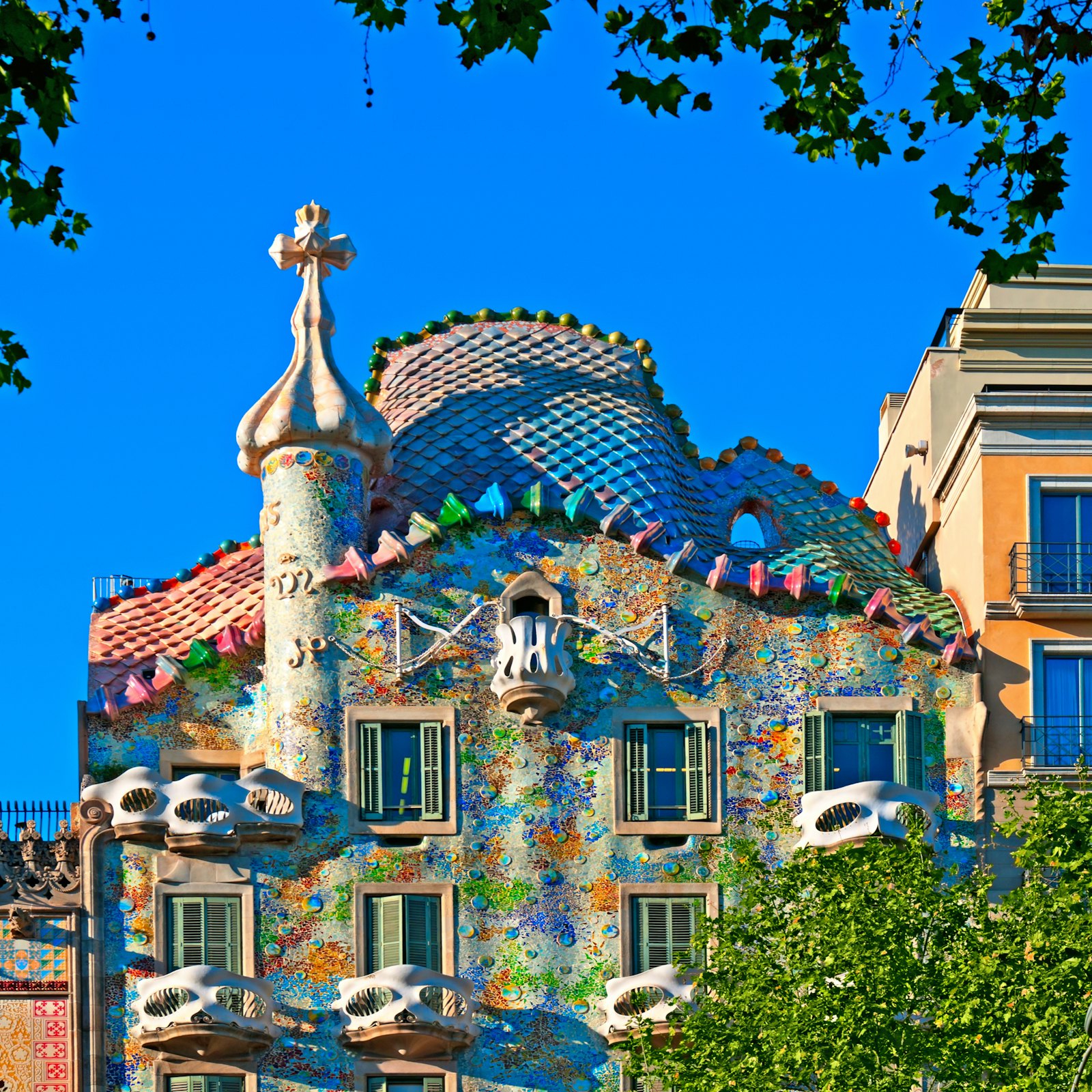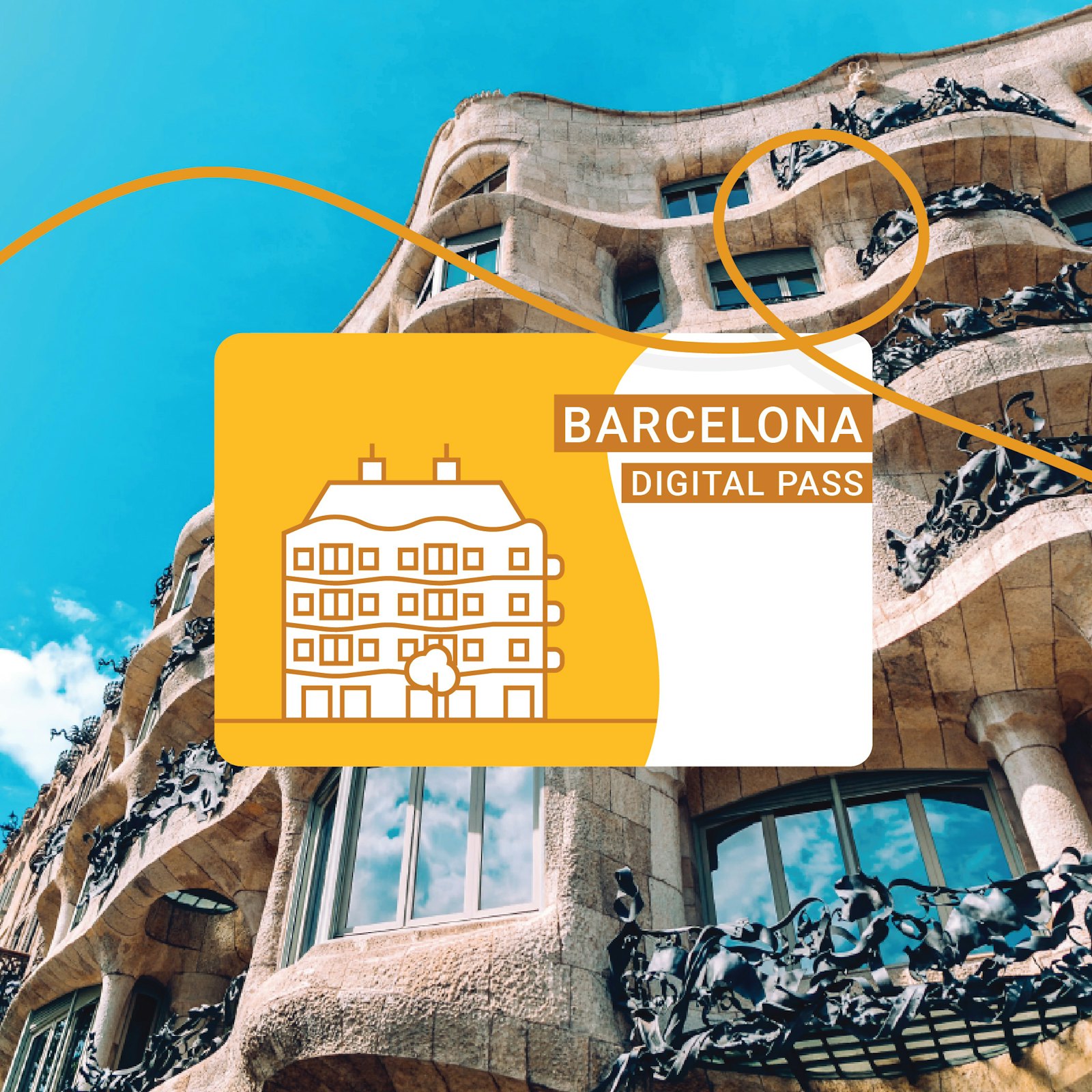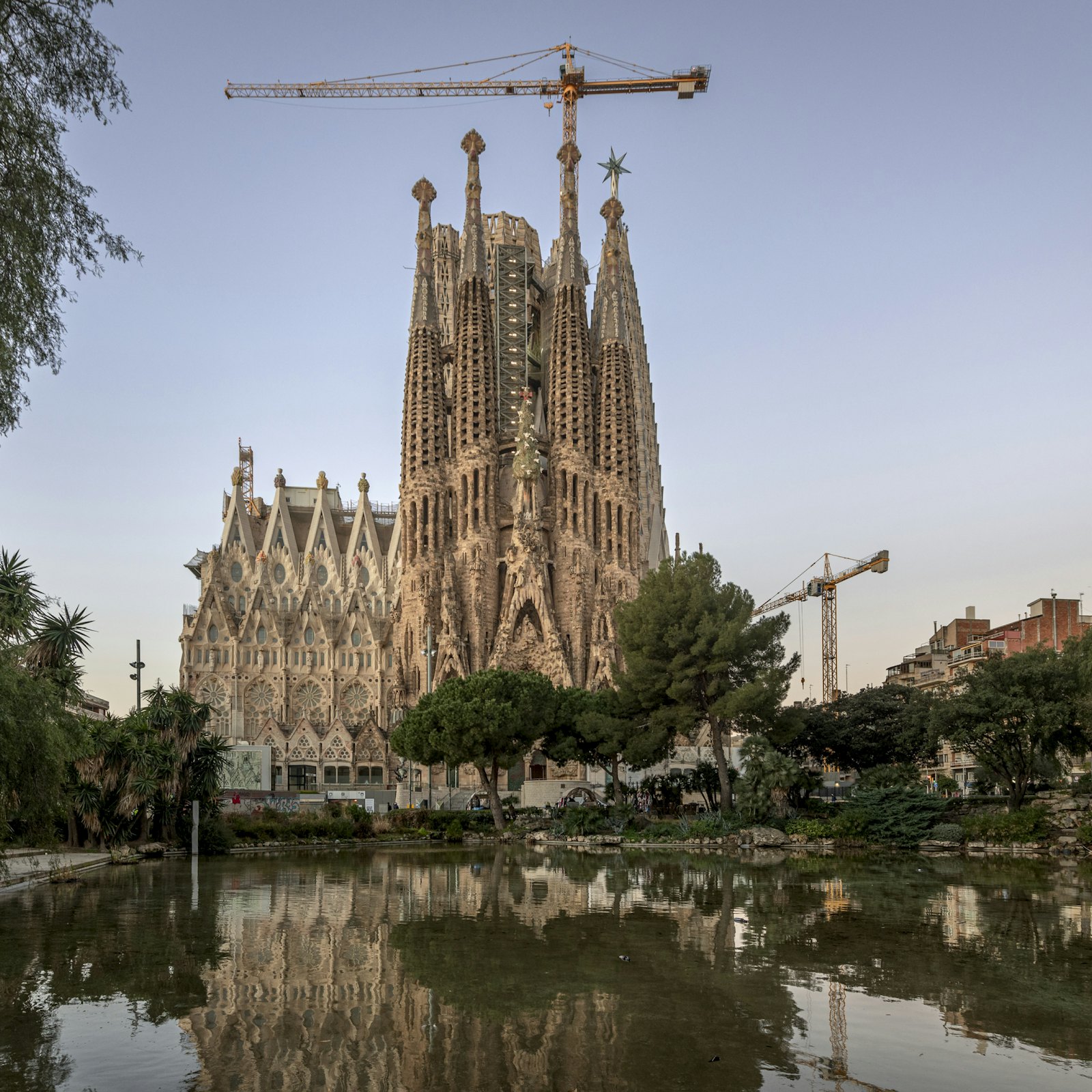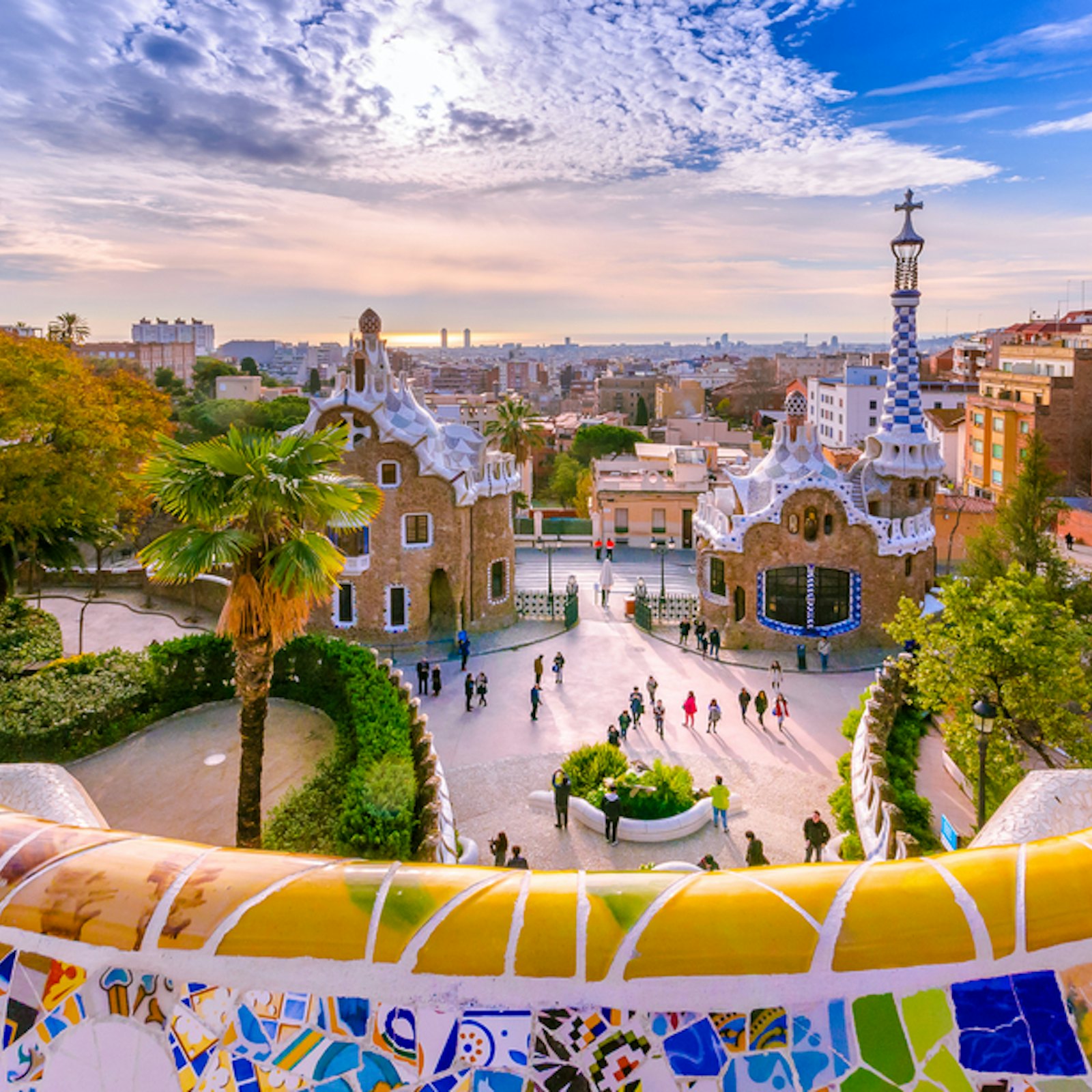3 Houses of Gaudi
Visit Gaudí's three houses with one time-saving ticket, plus an audio guide
- Casa Batlló: Entry Ticket
- Casa Milà - La Pedrera: Entry Ticket
- Casa Vicens: Entry Ticket
- Barcelona: Audio Guide App
- 10% Bonus Discount

Antoni Gaudí i Cornet (1852 - 1926)
{{ticket-block-triple}}
Antoni Gaudí is the architect responsible for some of Barcelona's most famous landmarks and popular tourist attractions. Born on June 25, 1852, in Reus, Spain, he passed away on June 10, 1926, in Barcelona, Spain, after being tragically struck by a tram. His career spanned several decades, during which he pioneered unique architectural styles and designed world-renowned landmarks such as the Sagrada Familia.
Sagrada Familia - See Ticket Options
Gaudí's masterpiece - the Sagrada Familia. Started in 1882, still unfinished but already a UNESCO World Heritage Site. Stands as Barcelona's (and the whole of Spain’s) most popular tourist attraction, drawing approximately 20 million visitors annually, with around 4 million purchasing tickets to explore its interior. The basilica's design, which Gaudí dedicated over 40 years of his life to, tells the story of Jesus' nativity, passion, and glory through intricate architectural elements. Despite suffering damage during the Spanish Civil War and facing various construction challenges, the project continues, with successive architects striving to remain faithful to Gaudí's vision.
Casa Vicens - See Ticket Options
One of Gaudí's first major commissions, Casa Vicens, was built between 1883 and 1885 in the Gràcia neighbourhood of Barcelona. It was designed for a stockbroker called Manel Vicens i Montaner, as his summer house, and reflects influences from Catalan architecture, Islamic art, and Japanese design. Casa Vicens remained a private residence until it was purchased by the Andorran bank, Morabanc, in 2014 and subsequently opened to the public.
El Capricho - See Ticket Options
While constructing Casa Vicens, Gaudí was also commissioned to build ‘El Capricho’, a summer villa in Comillas, Cantabria, for Máximo Díaz de Quijano. Although the property may not be one of Gaudí's most famous works, El Capricho is significant as it led to Gaudí's introduction to ‘Eusebi Güell’ and what would become a pivotal relationship in his career. The villa is open to the public, offering a glimpse into Gaudí's early work.
Palau Güell - See Ticket Options
In 1888, Eusebi Güell commissioned Gaudí to design Palau Güell. A property that would be the Güell family residence and reception hall allowing the family to entertain and hold events there. This six-level mansion features a central hall with a parabolic dome that floods the space with natural light. Gaudí's innovative use of the ‘Trencadís’ method in the chimneys and ventilation towers of Palau Güell was later replicated in his designs for Casa Batlló and Casa Milà - La Pedrera.
Park Güell - See Ticket Options
In 1900, Gaudí was tasked by Güell to create a garden city in Barcelona. Although the project to develop 60 homes on 15 hectares was never completed, Gaudí's design for Park Güell did end up becoming a beloved public park after the local council ended up purchasing the land from the Güell family. A handful of properties were completed, one of which Gaudí went on to live in until his death.
Torre de Bellesguard - See Ticket Options
Gaudí designed Torre de Bellesguard in 1900, a residence in northern Barcelona. The property incorporates mediaeval elements from the site's history as the home of the last king of the Catalan dynasty, Marti the Humane. Gaudí's design features in Torre de Bellesguard would later be seen in Casa Batlló and Casa Milà, again making it an influential property in the time-line of Gaudi.
Casa Batlló - See Ticket Options
In 1904, Josep Batlló Casanovas commissioned Gaudí to renovate Casa Batlló. Known by various nicknames, including "the house of bones" and "the house of the dragon," Casa Batlló showcases Gaudí's creative freedom and mastery. The building, part of UNESCO's "Works of Gaudí" collection, now welcomes around 1 million visitors each year and has received numerous awards, including UNESCO World Heritage status.
Casa Milà - La Pedrera - See Ticket Options
Casa Milà, commonly known as La Pedrera due to its similarity to a rock-quarry (that is the translation), was Gaudí's final private commission and completed in 1912. Commissioned by Pere ‘Milà’ and his wife Roser Segimon, this landmark on Passeig de Gracia is renowned for its undulating stone façade and iron balconies. Initially exceeding building regulations, it was later certified as "a monument in nature," exempting it from bylaws. Today, La Pedrera stands as a testament to Gaudí's genius and remains a major tourist attraction.
Gaudí's innovative designs and dedication to his craft have left an indelible mark on Barcelona, attracting millions of visitors from around the world each year.
Popular Tickets
Popular Attractions
Gaudi Barcelona FAQs
- What is La Sagrada Família in Barcelona?
- It's a massive basilica in Barcelona and probably Gaudí's most famous work. Construction began in 1882 and is still ongoing. It was due to be completed in 2026, but has since been delayed due to COVID and funding restrictions.
- What makes Casa Batlló in Barcelona so special?
- Casa Batlló is known for its colorful mosaic façade, skeletal balconies, and dragon-inspired roofline, symbolizing the legend of Saint George. Quite simply, you won’t see many other houses that look like it!
- What is Park Güell in Barcelona?
- Park Güell is a colourful public park in the city that was designed by Gaudí. It features mosaic-covered structures, meandering pathways, and great views of Barcelona.
- Can you visit Gaudí’s former home in Barcelona?
Yes, his former home, now the ‘Gaudí House Museum’, is in Park Güell. Click HERE for ticket options. - Is La Sagrada Família a UNESCO World Heritage Site?
- Yes, La Sagrada Família is part of the "Works of Antoni Gaudí" UNESCO World Heritage listing, which includes six other sites in Barcelona, including Park Güell, Casa Batlló, Casa Milà (La Pedrera) and Casa Vicens
- What is Casa Milà (La Pedrera)?
- Casa Milà (La Pedrera) is a residential building in Barcelona that was designed by Gaudí and is known for its undulating stone façade, wrought-iron balconies, and rooftop chimneys which resemble sculptures.
- Can you climb to the towers of La Sagrada Família?
Yes. Click HERE for ticket options. You can climb one of the towers and enjoy the panoramic views of Barcelona. - What is Palau Güell in Barcelona?
- Palau Güell is one of the lesser-known Gaudí masterpieces. An urban mansion that was built for Eusebi Güell.
- How long does it take to visit Park Güell in Barcelona?
- A typical visit to Park Güell normally lasts around 1.5 to 2 hours, but you could spend more time exploring its gardens and architectural features.
Gaudi Fun and Interesting Facts
- Nature was Gaudí’s greatest teacher. He often studied plants, animals, and natural structures to incorporate their forms into his designs.
- La Sagrada Família’s design mimics a forest. The interior columns resemble tree trunks branching out to form a canopy.
- Park Güell was initially a failed housing development project. It was intended to be a luxury housing development but only two houses were sold.
- Casa Milà’s nickname, “La Pedrera,” means “The Quarry.” Locals thought its stony appearance resembled a rock quarry when it was first built.
- Gaudí is buried in La Sagrada Família. His tomb is located in the crypt of the basilica.
- Gaudí rarely drew detailed plans. He preferred to create scale models and adjust designs as construction progressed.
- Casa Batlló’s roof represents a dragon’s back. The tiles mimic scales, and the cross-shaped turret represents Saint George's lance.
- Gaudí lived modestly despite his fame. He dedicated most of his resources to his work and religious pursuits.
- La Sagrada Família is funded by visitors. Entrance fees are the primary source of funding for its construction!
- Casa Vicens was Gaudí’s first major commission. This colorful house features Moorish and Oriental influences.
- The chimneys of Casa Milà are iconic. They inspired the design of stormtroopers in Star Wars, according to some theories!
Fun Facts About Antoni Gaudí
- Nature-Inspired Designs: Gaudí was deeply inspired by nature, which is evident in his architectural designs. He often incorporated natural forms and organic shapes into his work which mimicked the curves of plants, animals, and even geological formations. His masterpiece, the Sagrada Família, features elements inspired by trees, flowers, and the human body.
- Unique Construction Techniques: Gaudí developed a unique method known as the "catenary arch" or "parabolic arch," which allowed him to create structures that were both strong and aesthetically pleasing. He used models made of hanging chains and weights to study the forces of tension and compression, which helped him design buildings that were innovative and structurally sound.
- Colourful Mosaics: Gaudí was famous for his use of ‘trencadís’, a type of mosaic made from broken ceramic tiles, glass, and other materials. The technique is prominently featured in Park Güell, where vibrant, colourful mosaics cover benches, walls, and sculptures, adding a whimsical and artistic touch to the park.
- Deeply Religious: Gaudí was a devout Catholic, and his faith played a significant role in his work. He dedicated the latter part of his career to the construction of the Sagrada Família, Barcelona's most popular tourist attraction. He considered this project his life's work, and he devoted over 40 years to its design and construction, leaving detailed plans for future generations to complete the church.
Some of Gaudi's Properties in Barcelona






























